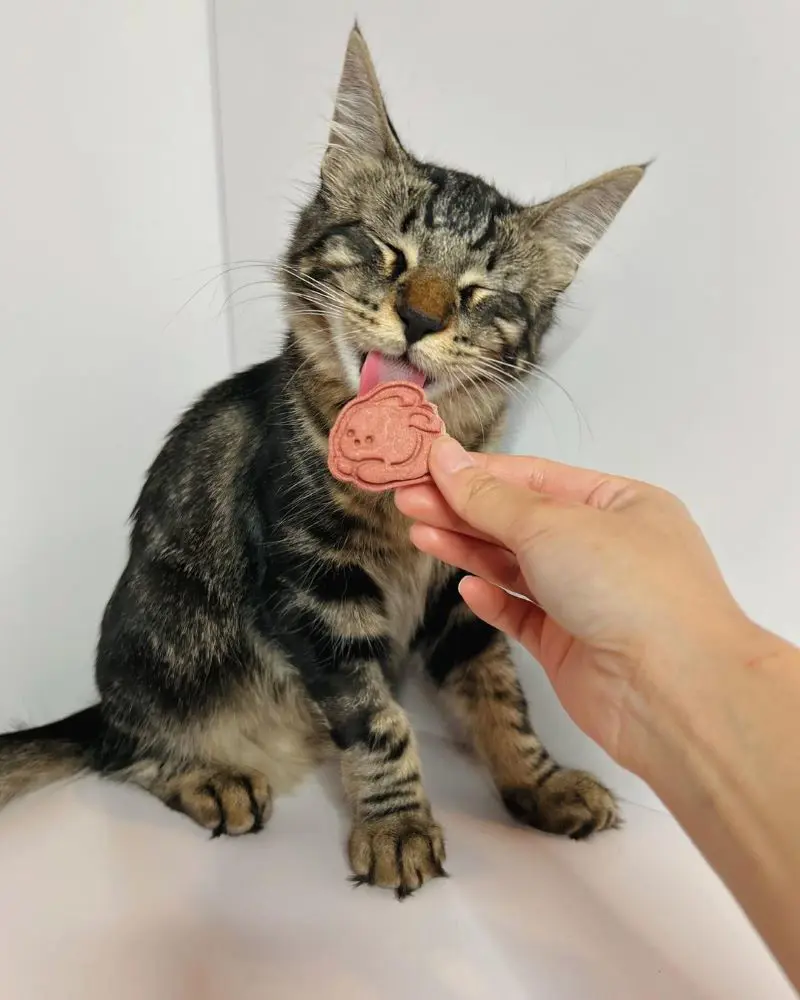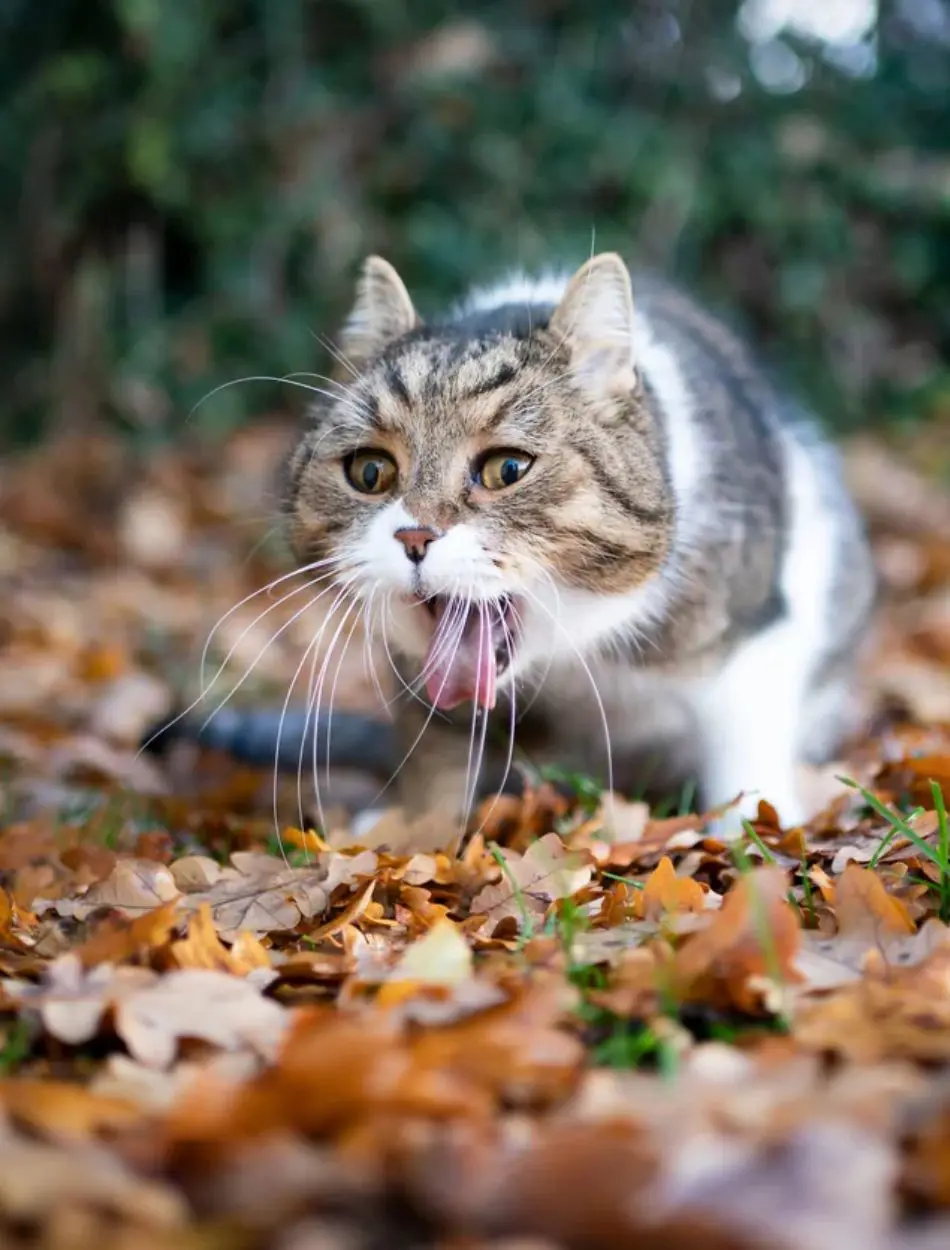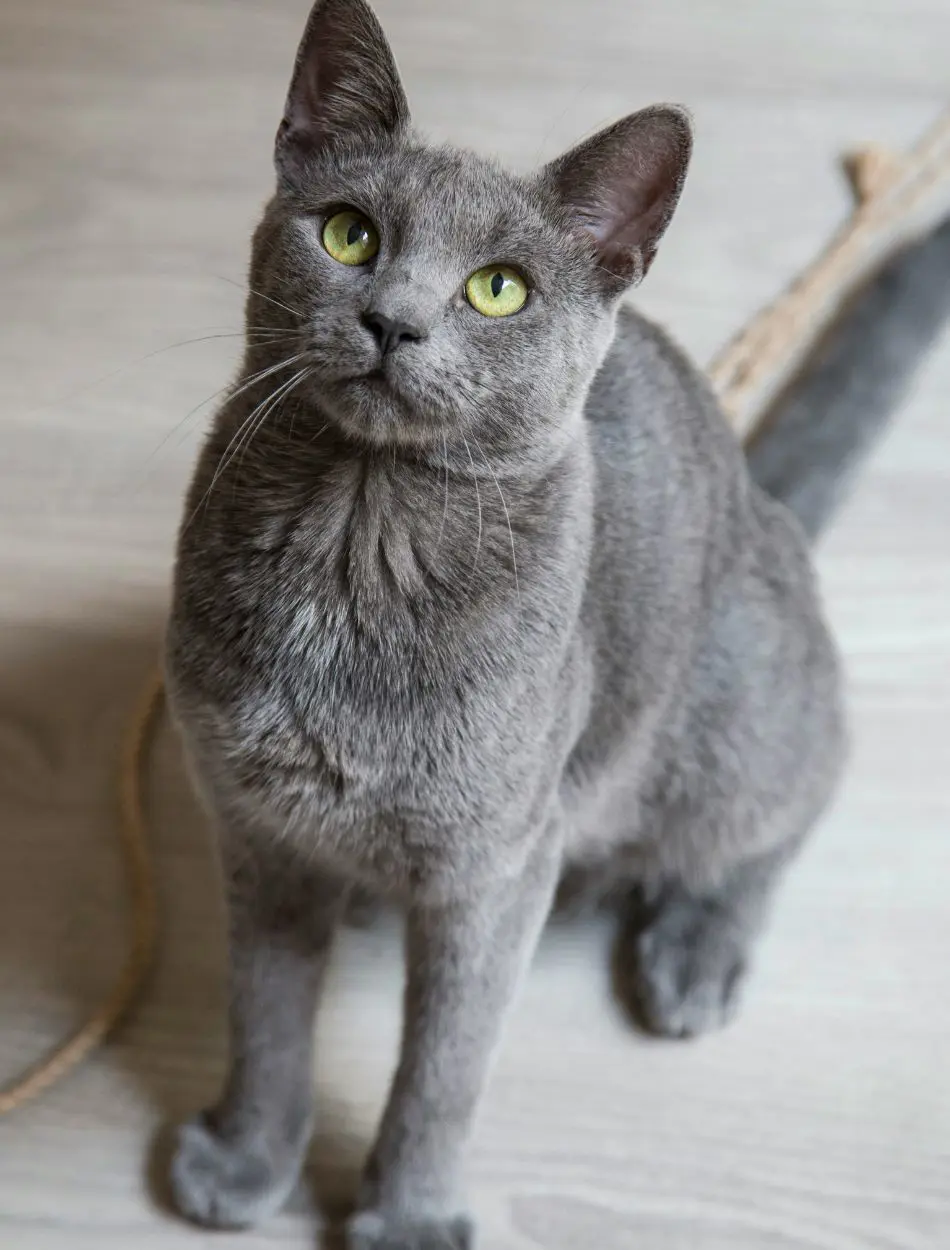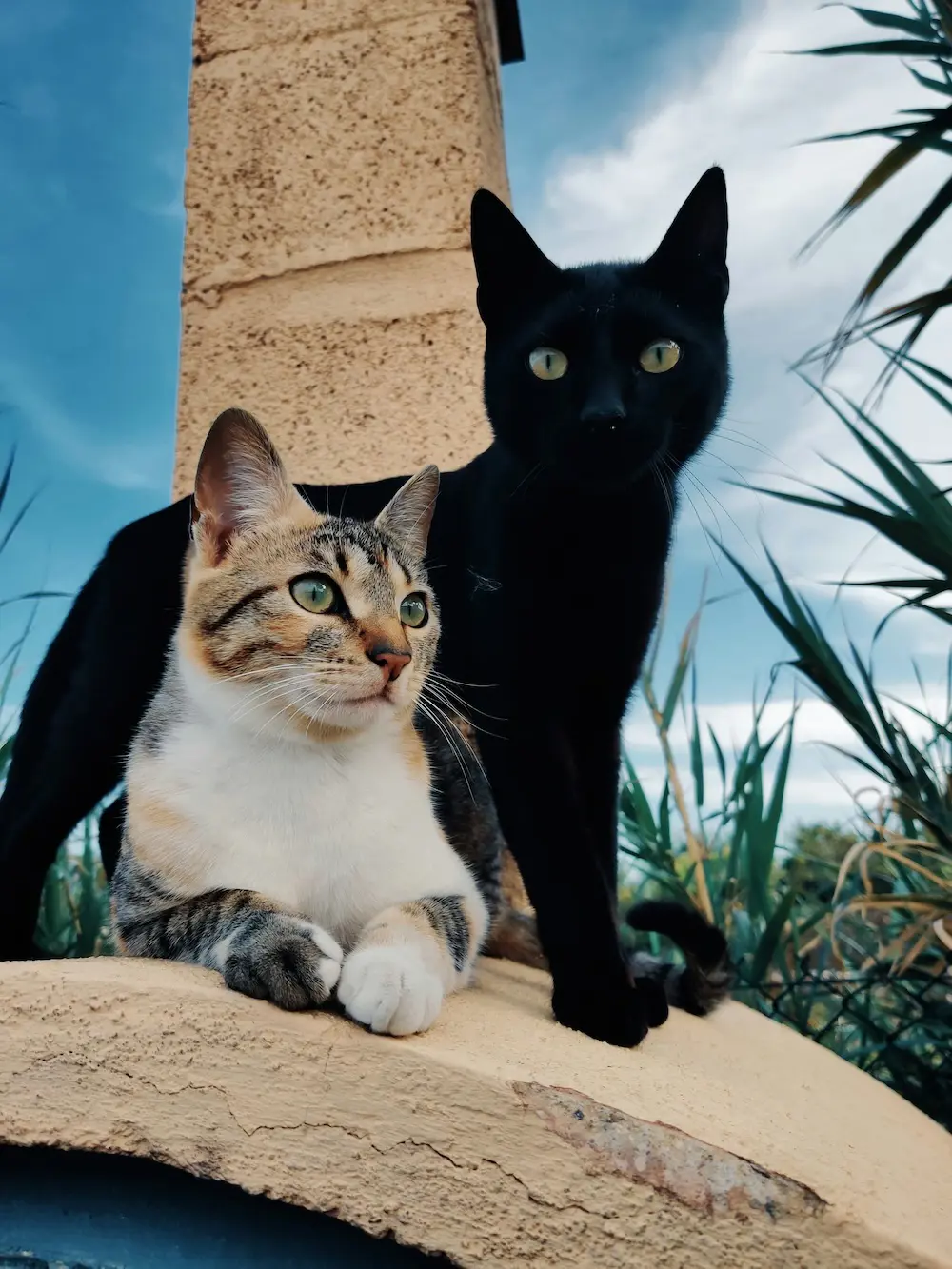18 Reasons Why Cats Are Itching So Much
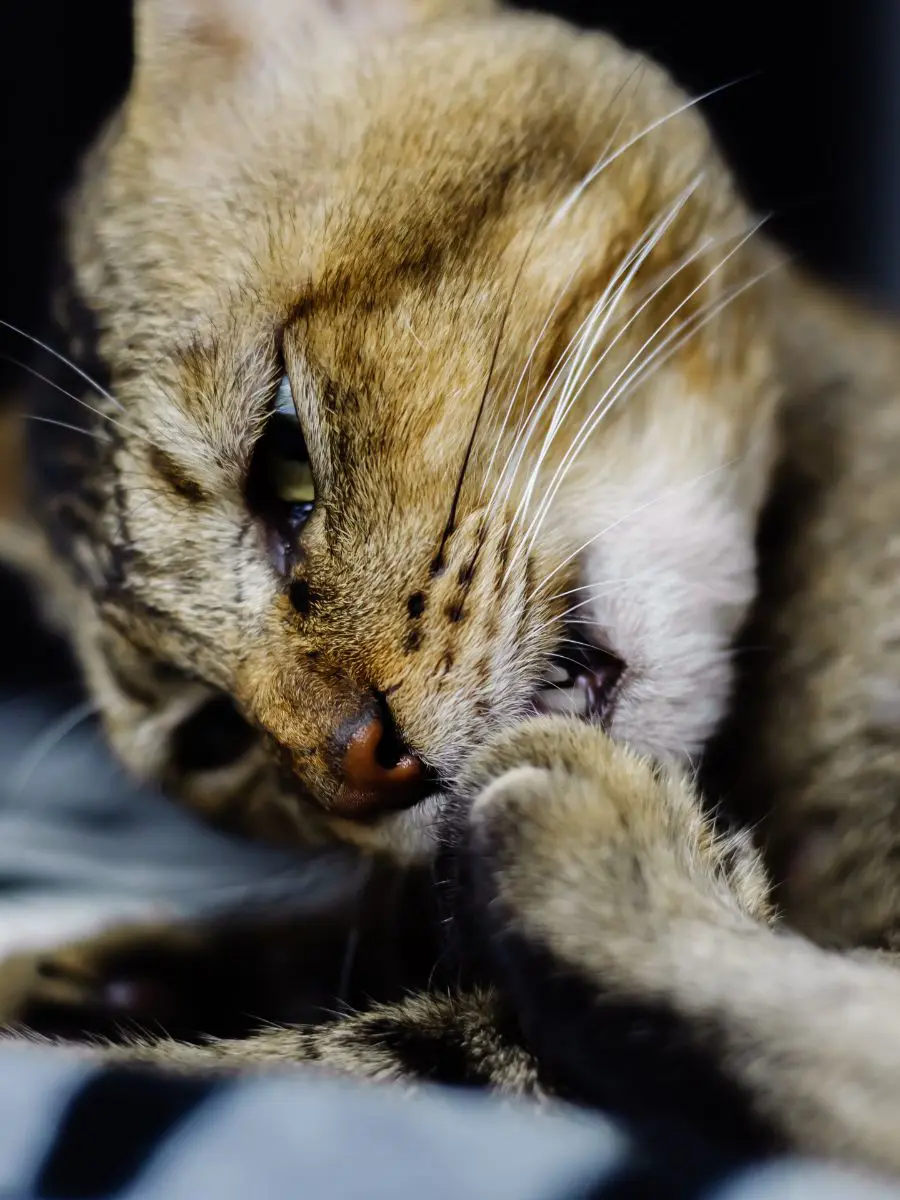
Cat itching refers to the impact that elicits a cat to scrap, bite, or lick its skin unnecessarily. The condition can be obvious for several reasons, extending from outermost factors like parasites to internal health issues.
Skin infestation, both bacterial and fungal, can also be a source of itching, often gone along with redness, bumping, or release. Occasionally, dry skin resulting from poor nutrition, low humidity, or fundamental health issues can make a cat itch. Psychological factors, including pressure or anxiety, might cause a cat to scratch more customarily as a form of self-soothing. Itching can leave cats with raw or bleeding skin, major discomfort, or hair loss.
1. Fleas
Flea saliva is a known antigen for many cats, activating an allergic response known as flea allergy eruption. Even a few bloodsucker bites can cause severe itching, redness, and stinging in cats with this hypersensitivity.
Prickling often leads to immoderate scraping, licking, or biting at the skin, which can result in hair loss, sores, and subordinate bacterial contamination. Fleas are thoroughly lively and can infest a cat’s surroundings, making them strenuous to abolish once an infestation begins. They prosper in warm, sultry conditions and can reproduce quickly, laying eggs in the cat’s fur, bedding, or carpet.
Controlling fleas involves a multi-pronged procedure, including regular use of beetle preventatives, exhaustive cleaning of the cat's living area, and treatment of any contagion in the home.
2. Food Allergies
Food allergies in cats occur when the resistant system behaves adversely to particular proteins in their diet. Unlike food fanaticism, which primarily affects dissolution, food sensitivity triggers an immune response that can lead to itching, redness, and eruption of the skin.
When a cat ingests a food they're allergic to, their body falsely recognizes the protein as a threat, releasing histamines that cause itching. This tingling is often most perceptible around the face, neck, ears, and sometimes the feet. Cats may also disclose signs like hair loss, scabs, or hot spots from excessive scratching, biting, or grooming.
Diagnosing a food allergic reaction ordinarily involves an excluded diet, where the suspected allergens are removed from the cat's diet for a period to see if indications improve.
3. Environmental Allergies
Environmental allergies, also known as atopy, occur when a cat's immune system overreacts to innocuous substances in their surroundings. Common territory antigens encompass pollen, mold spores, dust mites, and grass.
These irritants are commonly sucked in or come into contact with a cat’s skin, foremost to a hypersensitive reaction. When exposed to this ragweed, a cat’s not liable system releases histamines and other compounds, causing itching, redness, and soreness of the skin. Inhabitually, cats may develop sores, scabs, or hair loss due to immoderate scraping and biting.
This susceptible response can be seasonal, mostly if pollen is the trigger, or year-round if dander, like dust mites or mold, is present in the home environment.
4. Contact Dermatitis
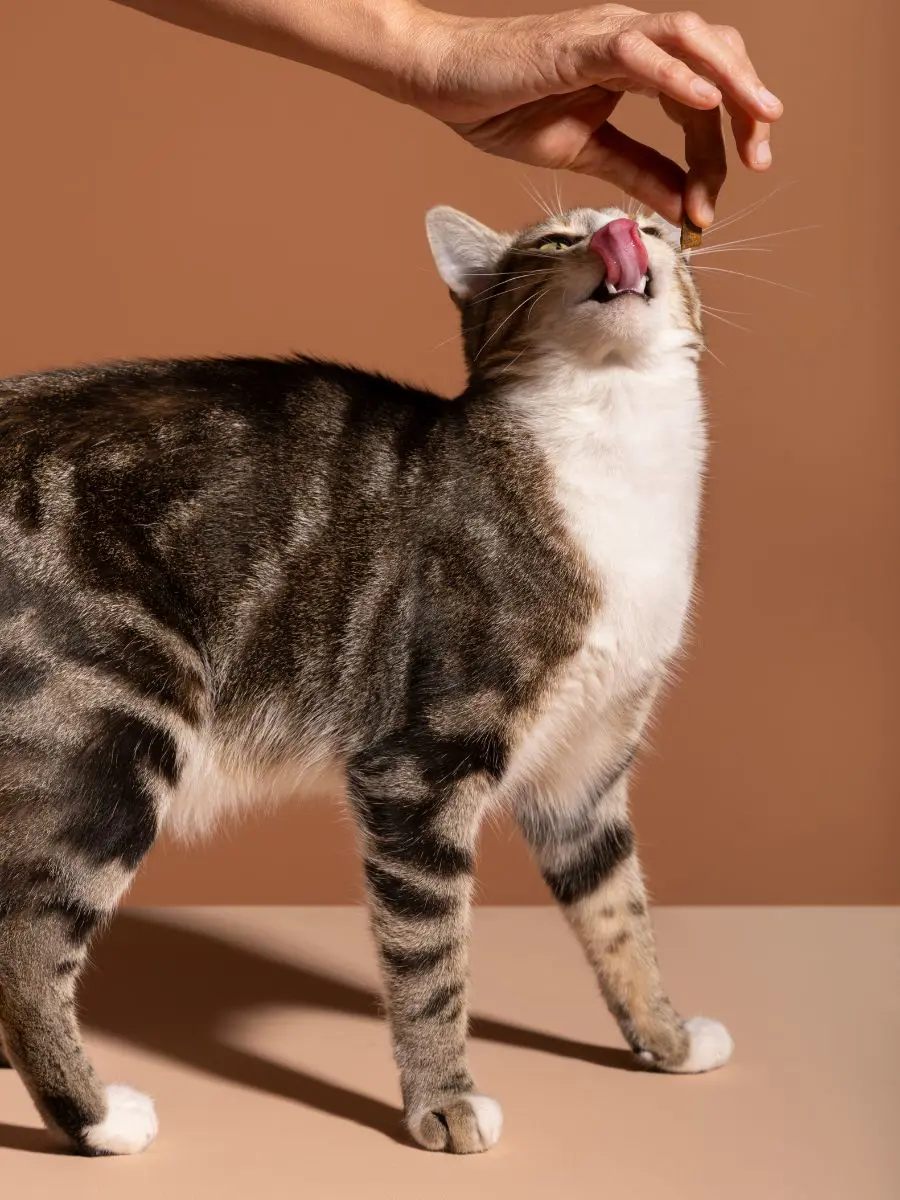
Contact eruptions in cats occur when their skin directly touches infuriating materials. These substances can include various everyday materials, such as plastics, certain cleaning products, specified fabrics, or even some pet grooming products.
Cats with contact scabies may scrap, lick or chew in the affected area to soothe the exasperation, which can further worsen the condition. Common signs of contact eczema in cats include confined itching, mainly in areas that have come into contact with antigens, such as the face, paws, belly, or around the neck.
The skin may emerge red, puffed up, or scaly, and hair loss can occur from imprudent grooming of the irritated area. Sometimes, open sores or scabs can develop due to tenacious scratching or biting.
5. Fungal Infections
Pest contamination, including ringworms, is a familiar cause of itching and skin infuriating in cats. Regardless of its name, tinea is not caused by a worm but by a group of fungi called dermatophytes, which infect the outer layers of the skin, hair, and nails.
These fungi thrive in warm, damp surroundings and can spread through direct contact with an infected animal or polluted objects such as bedding, grooming tools, or furniture. Indications of roundworms in cats comprise circular patches of hair loss, redness, and scaly or crusty skin, often go along by itching.
Infected areas are frequently found in the head, ears, and forelimbs but can emerge anywhere on the body. Other rotting infections, like yeast infections, can also cause itching, peculiar in areas where wetness assembles, such as the ears, under the chin, and around skin folds.
6. Dry Skin
Parched skin in cats can lead to stinging, twinge, and flaky patches on their skin. This affliction is often caused by low dampness or poor nutrition, both of which can interrupt the natural stability and health of a cat's skin.
In circumstances with low fogginess, chiefly during winter when indoor heating is widespread, a cat’s skin can lose condensation, leading to drought and irritation. Comparably, a diet requiring the necessary fatty acids, vitamins, or proteins can come to dry, flaky skin, as these ailments are crucial for preserving a healthy skin barrier.
Cats with wilt skin may scrap, lick, or bite at their skin more habitually, leading to hair loss or even skin ulceration if left untreated.
7. Insect Bites
Mosquitoes, ants, spiders, bees, and other insects can bite or sting cats, leading to confined infuriation, bulging, and prickling. These bites can cause a sensitive response in some cats, evolving into more intense prodrome such as redness, hives, and serious itching.
The most habitual zones pretentious by insect bites are the face, ears, and paws, where the skin is more uncovered and less safeguarded by fur. When a cat is bitten by an insect, it might scrap, lick, or bite at the ailing area, striving to alleviate the soreness. This conduct can sometimes lead to secondary skin infections or sores if the skin is broken.
Some insects, like bees or wasps, can also cause a more significant response if the cat is stung, mostly if the sting occurs inside the mouth or throat, which could lead to swelling and breathing problems.
8. Autoimmune Diseases
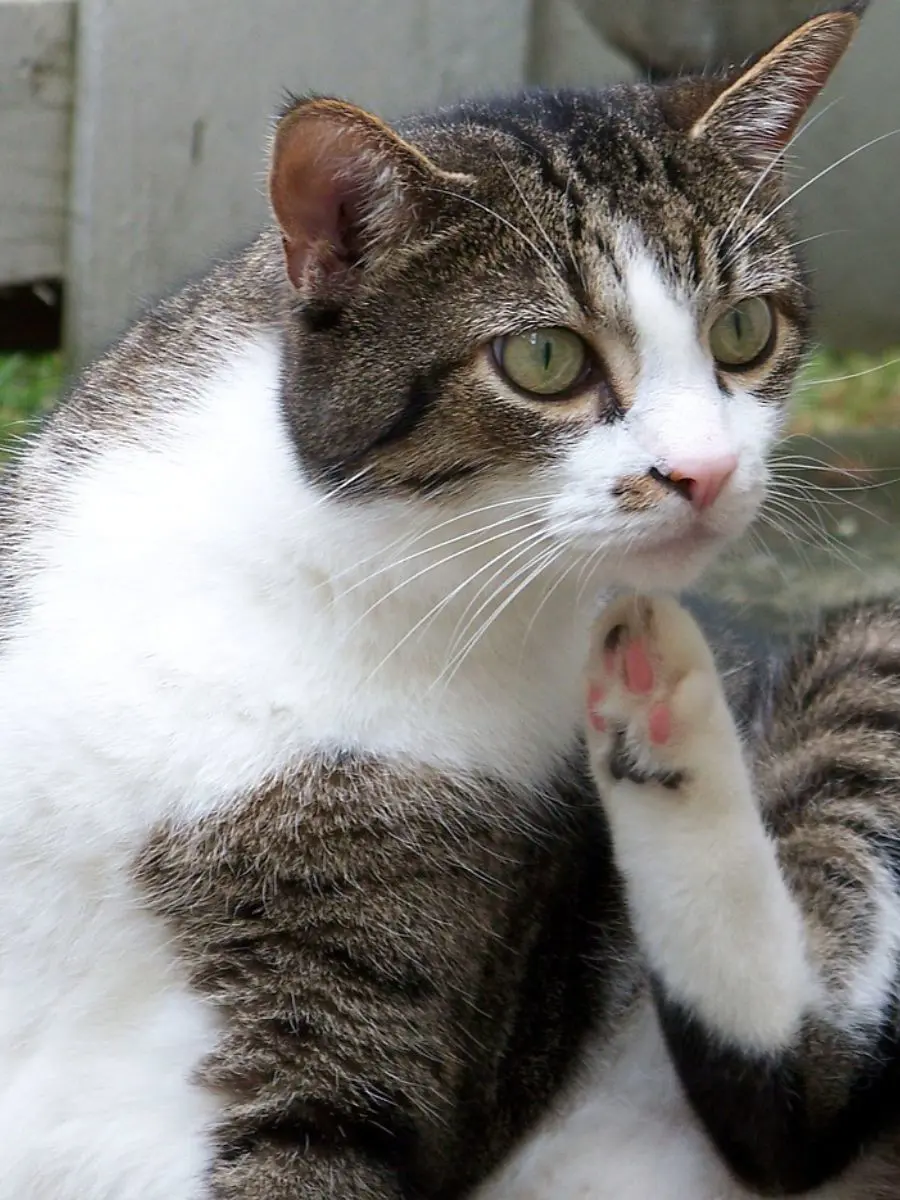
Chronic diseases in cats occur when the resistant system falsely chooses and pounces on the body's tissues. One such condition, blisters, involves a spared system striking the skin and mucous membranes, leading to serious skin problems.
The resistant system constructs antiseptic against the skin's cells, causing pustule, abruting, and destruction of the skin. This can result in extreme stinging, redness, and pain, remarkably affecting the cat’s solace and quality of life. Cats may scrap, bite, or lick in these areas, leading to alternate infections or further skin damage.
Other life-threatening conditions can also cause skin issues and itching due to the unaltered system's attack on the skin.
9. Hormonal Imbalance
Hormonal disruptions, such as those seen in Cushing's disease, can importantly bump a cat’s skin health and cause tingling. Cushing's disease results from an excessive amount of cortisol by the adrenal glands.
In cats with Cushing's disease, the skin may become thin, weak, and vulnerable to bruising, as well as develop a dull or greasy presence. These changes can lead to stinging, uneasiness, and increased liability for infestation. Other endocrine imbalances, such as hypothyroidism or hyperthyroidism, can also affect the skin. Hypothyroidism, distinguished by inadequate thyroid hormone production, can cause dry, flaky skin and hair loss.
Determining endocrinal disorders involves blood tests and a thorough veterinary examination to assess hormone levels and overall health.
10. Grooming Habits
Over-rubbing in cats, often caused by tension or uneasiness, can lead to skin displeasure, stinging, and hair loss. Cats groom themselves clearly to keep their coats clean and remove parasites, but uncontrolled brushing can stipulate fundamental issues.
When a cat rubs inordinately, it may be striving to cope with pressure, weariness, or uneasiness. This manner is known to involve the cat licking, biting, or chewing its fur to the point of harming the skin and separating hair, especially on the belly, legs, or sides. Over-rubbing can cause the skin to become annoyed, puffed up, and itchy due to persistent friction and wetness from saliva.
The affected areas might evolve sores, redness, and occasionally subordinate bacterial infestation if the skin is broken. To address over-combing, it's crucial to pick out and reduce the cat’s stressors.
11. Poor Diet
An underfeeding lack of necessary nutrition can appreciably collide with a cat's skin health, major to drought, flakiness, and prickliness. Cats need a balanced diet rich in proteins, fatty acids, vitamins, and minerals to preserve healthy skin and coat.
Essential fatty acids, such as omega-3 and omega-6, play a crucial role in skin health by continuing the skin's damp barrier and lowering tenderness. When these nutrients are insufficient, the skin can become dry, scaly, and itchy, causing the cat to scratch or groom unnecessarily. Vitamins like A, E, and B-complex are also obligatory for skin health, as they support resistant function, skin cell turnover, and overall resilience against surrounding stressors.
Regular veterinary check-ups can help make certain that a cat’s diet is meeting its nourishment necessity, supporting both overall health and healthy skin.
12. Hot Spots

Hot spots, also known as acute moist dermatitis, are aching, burning skin lesions that can evolve quickly in cats. These spots are frequently caused by bug infections resulting from imprudent caning, scratching, or biting.
Hot spots are consistently red, damp, and dilated, and they may discharge matter or other fluids. They can materialize anywhere on a cat’s body, but are oftentimes found on the head, neck, and legs. Extreme itching and pain correlated with hot spots can lead to a brutal cycle of slaughtering and rasping, which intensifies the condition and can cause the infestation to spread.
Decreasing the cat’s itching through medications or using an Elizabethan collar can also help speed up the healing process.
13. Ear Infections
Cats with ear infections may manifest signs of intemperate scratching around the ears, head trembling, glowing, bumping, and a foul-smelling release. The infestation can cause stinging that leads to persistent scratching, which can more distantly harm the skin around the ears and inflame the condition.
This suppuration takes place when there is an overgrowth of germs in the ear canal, many times due to components such as dampness, hypersensitivity, ear mites, or foreign objects lodged in the ear. Ear infections generally occur when there is a prime condition that disrupts the ear's normal surroundings, permitting bugs to multiply.
Treatment often involves cleaning the ear rigorously and regulating topical or systemic antifungal medications to address the infection.
14. Foreign Bodies
Foreign bodies, such as burrs, fragments, grass seeds, or small pieces, can become lodged in a cat’s fur or skin, foremost to annoyance, itching, and uneasiness. When these things get trapped in a cat's coat or spike the skin, they can cause localized stinging and itching as the cat's body reacts to the presence of foreign objects.
Cats may counter by scratching, biting, or licking the affected area inordinately in an attempt to remove the tingling, which can sometimes cause further skin harm or subordinate infestation. Common areas for foreign bodies to become submerged include the paws, where needles or burrs might get caught, or the ears, where grass seeds or other small debris can become lodged.
If not removed immediately, foreign objects can cause notable pain and may lead to abscesses or other difficulty if they penetrate deeply into the skin or tissues.
15. Sunburn
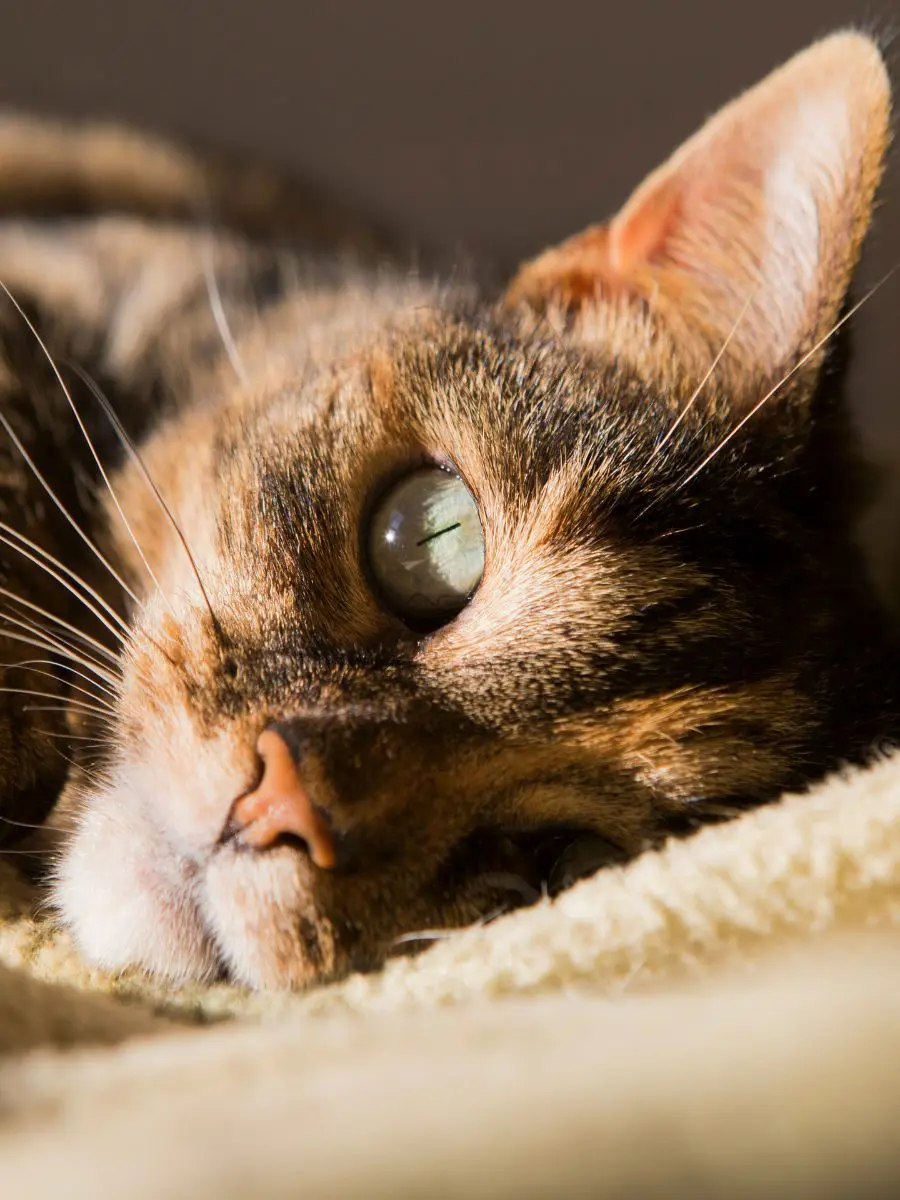
Suntans in cats, distinctly those with light-colored or thin fur, can cause skin infuriation, redness, and itching. Just like humans, cats can suffer from sunburn when exposed to ultraviolet (UV) rays for extended periods.
Cats with white or light-colored fur are at a higher risk because they lack adequate complexion to protect their skin from the sun's harmful rays. Sunburn is most ordinary in areas with sparse fur coverage, such as the ears, nose, and belly. The indications of sunburn in cats include redness, tenderness, flaking, and sometimes extremeness of the skin.
Affected cats may scrap or lick the suntan areas unnecessarily, trying to relieve the uneasiness, which can lead to further irritation or even infection.
16. Yeast Infection
Yeast infections in cats occur when there is a gigantism of yeast, which comes about on the skin. Most ordinary yeast is in control of these infections, which usually inhabit the skin in small numbers.
Nevertheless, definite conditions, such as high dankness, sensitivity, enfeeble resistance systems, or primary skin conditions, can cause yeast to proliferate absurdly, leading to an infestation. Signs of a yeast infection comprise harsh tickling, redness, flaky skin, and an oily or waxy coat, especially in areas like the ears, armpits, groin, and between the toes.
Affected areas may also discharge a differentiating musty or yeasty smell. Cats with yeast infestation often scrap or lick the annoying areas habitually, which can aggravate the condition and lead to secondary bacterial infections.
17. Bacterial Infection
Microorganism infestation in cats’ skin, also known as pyoderma, occurs when bugs puncture the skin blockade and grow, leading to discomfort, stinging, and redness. These infections are often minor, meaning they result from fundamental states that settle the skin’s honesty, such as allergies, spongers, wounds, or immoderate roughening.
Affected cats may display severe prickling and soreness, leading them to scratch or groom unreasonably, which can further impair the skin and inflame the infection. In serious cases, hair loss, unsmoothing, and painful sores may develop.
Treatment generally involves medication, either topical or oral, depending on the infection's acuteness. It’s essential to complete the full course of medicine to prevent aversion to and reversion.
18. Mites
Mites are minute bloodsucking millipedes that can overspread cats' skin and ears, causing severe stinging, impatience, and uneasiness. Several types of jots repeatedly affect cats, including ear mites and mange mites.
Ear mites first and foremost inhabit the ear canals and sustain skin oils and wax, leading to festering, dark discharge, and serious tingling. Cats spread through with ear mites very often shake their heads and scratch at their ears, often causing further exasperation or subordinate infestation.
Mange mites, such as those causing feline eczema, burrow into the skin, leading to prodrome-like intense prickling, redness, and hair loss. The skin may become brittle and thickened due to persistent scraping and the mite's excavating activities.
Recent posts
Cats
How Much to Feed a Kitten: A Complete Chart, Schedule And Caring Guide
As cats are fast-growing, their nutrient requirement can change quickly, sometimes within a few days. Generally, a food schedule consisting of small amounts spread throughout the day is much better than feeding 2-3 large meals. If you are unaware of ...
Why Is My Cat Throwing Up? 16 Common Reasons
Your cat doesn't always give you a clue why their tummy is troubling them so much that it is hurling hairballs or something more serious. Why does your cat vomit? From simple dietary indiscretions to a myriad of other common and complex conditions, t...
A Step By Step Guide On How To Give A Cat A Pill
Since cats are regarded for their independence and generally tend to refuse to take medications, giving them a pill can be a tough attempt for many pet owners. This makes the process stressful for both the pet and the owner. This guide is supposed to...
18 Signs A Cat Is Dying
One of the most difficult things to witness as a pet owner is seeing your feline's degrading condition. They are known to hide their pain and discomfort during the end of their lives. It is important to know the signs a cat is dying to offer comfort ...
Cat Poop Color Chart: How To Tell If Your Cat's Poo is Healthy
Monitoring your cat’s poop can offer essential clues about their health. While it appears to be a messy chore, taking note of the color, texture, and consistency of your cat's stool can warn you of underlying health troubles. The cat poop color...
15 Hypoallergenic Cat Breeds
Fur shedding, while a routine part of a cat's hygiene, can be a source of irritation to their owners. Especially in people allergic to protein excreted by cats, this can be a serious problem. Despite pet parents' fascination with perfect hypoallergen...
